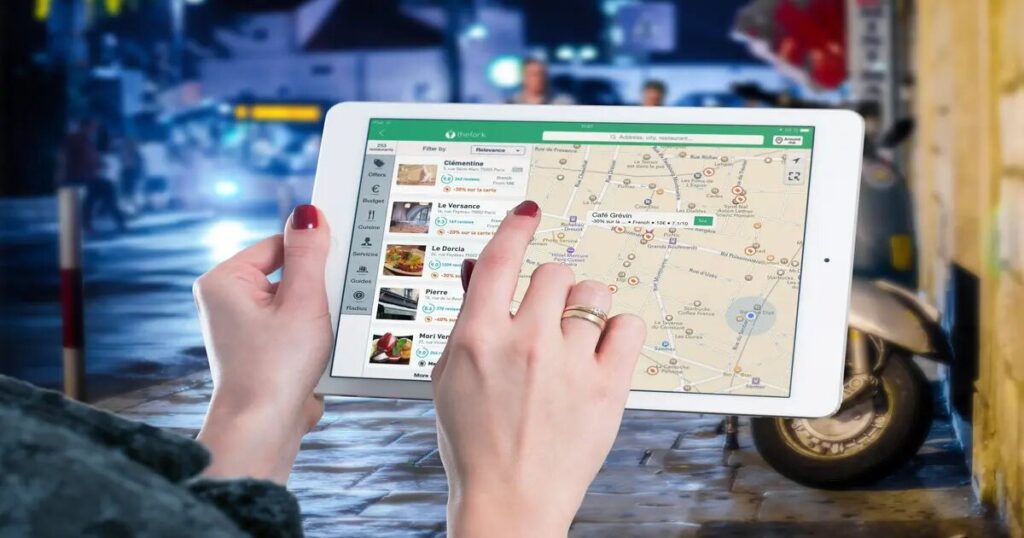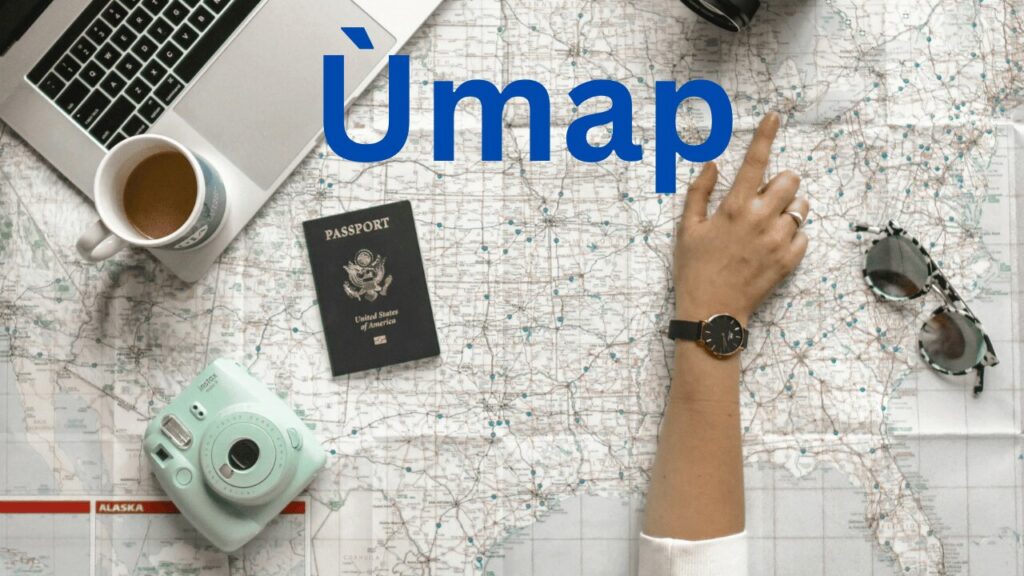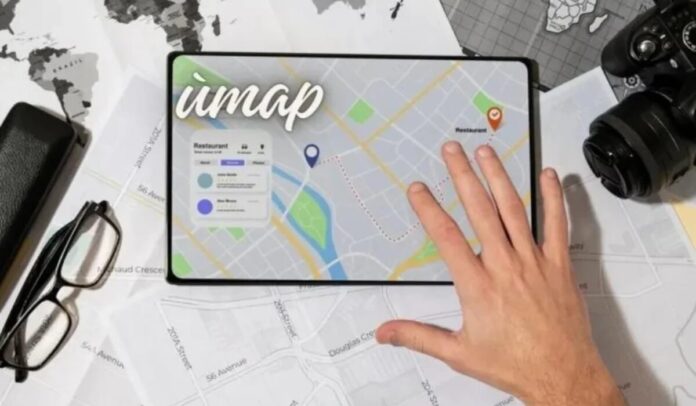In the digital cartographic navigation and mapping world, the rise of ùMap has become nothing but a symbol of technological innovations, as more than a century-old study of the earth meets up with current high-tech improvements. The Platform is not only a static tool for users to travel from A to B; it’s a developed suite of tools that promotes dynamic interaction with geospatial data.
In the map design,tkwekesitate provides access to a broad audience, from casual users looking for essential guidance to professionals doing complex earth observation analysis. It is through appreciating ù Map’s potential that one can understand how modern mapping technology improves confidence and interaction with the physical realm.
Understanding ùMap
The concept of ùMap is rooted in the fusion of “universal” and “map,” reflecting its aim to provide an all-encompassing mapping solution accessible to everyone, everywhere.
At its core, ùMap is a digital representation of spatial data, providing users with visual insights and a spatial context that traditional maps cannot offer. Present-day digitalization can enable users to map in actual time and chart all layers of data related to the earth’s geographical and environmental aspects.
This Platform’s potential as a recipient and visualization of this data with its intuitive and user-oriented interface redefines the perception of and interaction with maps, combining them from lifeless and static represent ants to flexible, instantly adjusting and responding tools to any requests and questions we have.
The Genesis of ùMap
Geography will always be about figuring out the world and our place in the scheme of this existential plan. The source of the current ù Map dates back to the oldest cartography time, when maps were thoughtfully made with bare hands. Along with enhancements, though, there came even more complexity for the maps to record.
The introduction of digital technology has made the course of the evolutionary process to make another breakthrough. ùMap, the product of years of map-based exploration and ever-advancing technologies, unites pixels and ink to create comprehensive cartographic knowledge in the power of digital.
Currently, uMap is implemented with advanced algorithms and massive databases that include satellite pictures and aerial surveys. Because of this, u Maps offers more accuracy and detailed information than traditional approaches.
In addition to a journey from physical to digital maps, this historical perspective also reminds us about the spur-ring need for the development of future technologies to keep pace with the growing demand for map-related services in the present society.
ùMap’s Comprehensive Geographic Database
The best mapping platform has a high-quality geographic database, but Ù Map goes one step further and beyond it. Its all-inclusive dataset is shown by the data sources from which it comes, such as satellite imagery, aerial photography, and open data payments. As a result, it makes the application more precise and up-to-date information, which is critical for use in everything from simple navigation to advanced geographical analysis.
Some data layers, revealing topography details, urban infrastructure, and environmental factors, can be accessed by clicking or pushing a button.
This cumulative resource, however, improves the user’s experience with precise maps and becomes handy for researchers and professionals who use this information in the sphere of development, urban spatial planning, and emergency management strategies.
The Engine Behind ùMap
At the heart of ùMap’s functionality are its advanced charting algorithms. These algorithms are designed to efficiently process vast amounts of spatial data, enabling smooth navigation and accurate route optimization.
From vector routing and path calculation with various directions for two points or traffic analysis to avoid congestion, ù Map’s algorithms deal with these tasks with incredible precision and speed. Beyond navigation, these algorithms extend their scope to comprehensive geographic analyses that include demographic studies and environmental impact evaluations.
Through constantly renewing and perfecting these algorithms, ù Map is ensuring that the mobile app remains at the forefront, being optimized to meet all the changing needs of its users when there is a context in which the geography data is essential for decision-making.

Simplifying User Interaction with Maps
One of the defining features of ù Map is its user-friendly interface, which simplifies how individuals interact with complex spatial data. ùMÙMapnterfaÙMapphy focuses on usability, thafocusess, t, to ensure users, e, to ensure that a bit of technical know-how can smoothly navigate, e its features.
The interaction pattern is—from scaling the maps to overlapping different kinds of information such as weather information and traffic updates—effortless and simple-minded.
Unless this information on geography is available, geography will lose its significance as a proper subject for both the public and specialists. Additionally, the functions of ù Map adjusted, which efficiently helps people to personalize mapping experiences and access different tools to suit the user’s interests or for business-related business-related collaborations when necessary.
How ùMap Enhances Navigation and Location Services
ùMap’s practical applications are vast and varied, but one of its most significant uses lies in navigation and location services. The Platform offers more than just providing the directions from point-to-point function.
It reassures users on a higher level by creating solutions relevant to their needs. ù Maps provides innovative routing features. It guides users on less crowded routes. Using the most updated traffic information also helps find a better route immediately.
Furthermore, it contributes to the efficiency of the road transport sector and enhances the planning of delivery routes, leading to decreased travel time and fuel consumption. Travellers (users of Map) may not have the Map just for navigation but could get real-time information about local businesses, their reviews and availability. The Local Map will become the essential travel companion, not a navigation tool.
Utilizing ùMap in Environmental and Resource Management
Geographic Information Systems (GIS) are pivotal in managing our environmental and natural resources, and ù Map’s capabilities in this area are exceptionally robust. ùMap is utilized extensively in ecological monitoring and management, providing tools to analyze environmental data and visualize the impact of various factors like deforestation, urban sprawl, or pollution levels.
For resource management, ùMap helps identify potential sites for renewable energy projects and assess mineral resources.
Urban planners and environmentalists rely on ù Map to create predictive models and make informed decisions based on comprehensive spatial analysis and historical data trends. This not only aids in sustainable planning but also crisis management, such as predicting flood zones and planning evacuation routes.
ùMap’s Role in City Planning and Infrastructure Analysis
ùMap is instrumental in the field of urban development and planning. By creating differentiated and custom maps, it is possible to capture the land use, infrastructure needs, and potential development areas observed by urban planners and developers.
The tools made available in the mapping experts’ hands allow for examining the population density, transit systems, and public utilities, which guide the planners during urban development that is more efficient and sustainable.
Also, as part of the community development effort, ù Map can interact with the public in the planning process by creating interactive maps that citizens can see and comment on and welcome to join in the community participation and project development. This interactive approach improves the planning process and enhances the responsiveness of urban projects to the community’s actual needs.
Enhancing User Experience with ùMap
The dynamic nature of ùMap is further exemplified by its ability to provide real-time updates and extensive personalization options. People can instantly receive notifications of traffic, weather, and other environmental factors at any moment, making the information dispensed most up-to-date and relevant.
This capability is vital to giving emergency responses and logistics companies the latest info necessary for timely decisions.
On the personalization front, ù Map allows users to tailor maps to their needs. Whether it’s highlighting favourite spots, creating custom travel routes, or overlaying various data layers like crime rates or school districts, ù Map delivers a platform that adjusts to the unique needs of its users, making it more than just a mapping tool but a personal geographic assistant.
ùMap at Your Fingertips
Accessibility is one of ùMap’s core advantages. To be as inclusive as possible, ù Map provides accessible modern web applications on most devices varying from laptops to smartphones and tablets, so no matter where they are, our users can view crucial geographic information continuously.
This is also because it almost becomes a mandatory requirement and, at the same time, brings about a broader participation in state-of-the-art mapping technology.
For them, the case is a possibility of convenient forward scheduling and location finding in a weird city. It enables field access to detailed maps and data analysis for professionals, crucial for on-site inspections or real-time project updates. The versatility and accessibility of ùMap mark a significant advancement in how we interact with geographic information systems.
Also Read about: Smitesource: Your Ultimate Guide to Smite Builds, Strategies, and Updates
Addressing Challenges in ùMap’s Journey
Despite its advanced capabilities, ùMap faces several challenges and limitations that impact its effectiveness. Data accuracy remains the prerequisite concern because one might use different sources for the analysis and mapping, and there are other data results in various maps and analyses.
Problems like old data, errors in data processing, or incomplete data offline can be a source of lousy decision-making because of the deformation or falsification of any information.
Privacy is another big issue raised since geo-information is collected and stored, and it is pretty vulnerable to being used misguidedly if it is not effectively secured.
Furthermore, there can be hardware problems like device incompatibility, network irregularities, and bugs, which will negatively influence the performance and reliability of ù Map and reduce the satisfaction and trust of users on our Platform.

Shaping the Future of ùMap
Looking ahead, ùMap is set to embrace artificial intelligence (AI) to enhance its capabilities further. Through AI, map processes can be improved, with AI helping collect, analyze, and predict geographical data.
Thus, personalized interactions based on user behaviours, automated route optimizations and accurate predictions will be possible. The incorporation of AI might cause the optimization of brilliant city inventions such as urban planning tools, environmental monitoring and emergency responses.
Significantly, as the AI-based ù Map constantly advances, the prospect of having the AI features involved more deeply in the geographic analysis is beyond ùMap’s efficiency; it is about changing how we see and mirror how we communicate with our spatial environment.
Conclusion
In conclusion, ùMap represents a significant leap forward in digital cartography and geographic analysis. By combining real-time data updates, extensive personalization, and broad accessibility, ù Map has transformed how we interact with maps, making geographic information more usable and impactful.
The independence of ùMap regarding data accuracy and privacy issues is a crucial feature, as it will revolutionize map making. While ù Map keeps developing, it is going to receive a new quality. It will reshape the mapping and create a process in the world for navigation, planning, and resource allocation.
Also Read About: Exploring Cofeemanga: A Fusion of Coffee and Manga Cultures
FAQ’s
Is ùMap free to use?
Yes, ùMap is free for everyone around the globe. However, additional premium features are available for users who opt for a monthly subscription.
Can I use ùMap offline?
Absolutely! ùMap allows users to download maps offline, enabling navigation and map access without an internet connection.
How often is ùMap updated?
ù Map is regularly updated to ensure that users always have access to the most delinquent features and data, helping them stay informed with the most current geographic information.
Are there any alternatives to ùMap?
There are several alternatives to ù Map, including well-known platforms such as OpenStreetMap, Apple Maps, and Google Maps, each offering different features and user experiences.
Does ùMap work on mobile devices?
Yes, ù Map is fully compatible with mobile devices. A reliable mobile app is available for iOS and Android platforms, providing comprehensive map access and navigation tools.
Is there a mobile app available for ùMap?
Yes, the ù Map mobile app is available for download. It allows users to access maps and navigation tools directly from their iOS or Android devices, enhancing their mapping experience.



